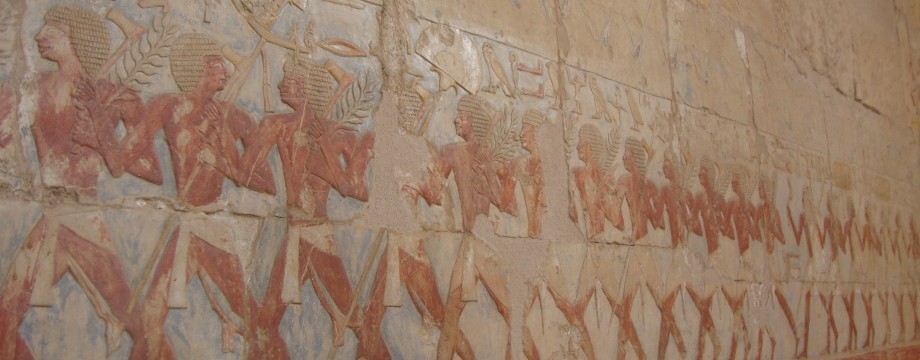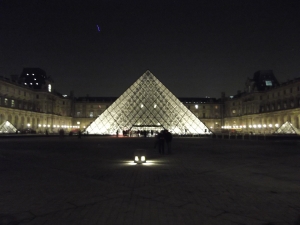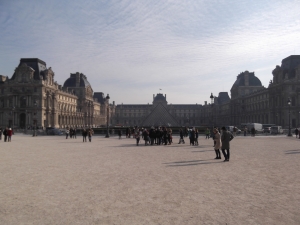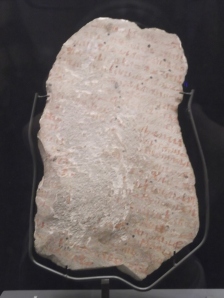Despite being quite quiet on the blog for a while (probably too long) I have recently been mulling a few things over about the future of, purpose and direction of television Egyptology. Television documentaries have been without doubt the impetus for many young students in their pursuit of academic study; however, there are still some members of the academy which see this variety of public engagement beneath them. Why is this so? Also what can we learn from other disciplines in respect to this field?
Intellectual Fears
Fronted by the imperious Dr Zahi Hawass, the Docu-drama series “Chasing Mummies” (2010) shown on the History Channel perhaps characterises the fears of many academics. Despite being placed upon the shoulders of the then Head of the SCA, the show came across as a pastiche, with Hawass appearing as the Egyptological equivalent of pantomime character- spontaneously losing his temper when the moment required. Whilst this show enabled many to view parts of sites which are strictly out of bounds, the performative aspects of this show undermined this greatly. Dr Hawass has appeared on many documentaries, clearly grasping an opportunity to raise the profile of Egypt and Egyptology. Despite any personal opinions or judgements on his discernment, it would be puerile to suggest that his appearances on such shows did not at least raise some awareness.
Despite the desire for elements of drama within shows, the sense of foreboding held by a number of academics when asked to contribute to documentaries is that their input will be edited and misused. We are all aware of the pseudoscientific and downright outlandish theories proposed by a number of sensationalist researchers and programs out there. For example; “Ancient Aliens” which has recently been approved for another series, has now clocked 51 episodes -Erich Von Däniken must be ecstatic! There will always be the programs such as the 2007 “Paranormal Egypt” with Derek Acorah (and his spirit guide Sam) who theatrically worked out that Khufu built the Great Pyramid via apparently manifest spiritual powers- mysterious! However, the real problem here is clear. These programs which show little positive interaction with evidence and research or indeed an active rejection of logic, are held in the same esteem by the production companies and thus by the audience themselves.
Recent Developments in Documentaries
In the recent years, we have seen an increase in the breadth and quality of scientific programs on the BBC, not only in long standing formats such as Horizon but also in the three “Wonders of…” series presented by Prof Brian Cox, the recent “Genius of Invention” group of episodes and also in shorter shows such as “BANG goes the theory” and the inventive “Stargazing Live”. These programs are helping to explain big theories and research and are managing to maintain viewership and levels of entertainment. Whilst Brian Cox is utilising impressive vistas and a gift of enthusiastic explanation where does Ancient History and Egyptology stand in this shift in documentary style?
Let’s take “Meet the Romans with Mary Beard” (2012) as a good example of how an evidence based documentary of the Ancient world can work. This three part series attracted on average around 2,000,000 viewers per episode, with episodes 1 and 3 charting at 9 and 6 in the most watched programs on BBC 2 during those weeks. Fundamentally this was a series focussed on Roman epigraphy- not everyone’s favourite topic, and in the wrong hands very dry. Despite the venomous reaction of A A Gill who chose to avoid any academic rigour and instead focussed on being childishly misogynistic, the knowledgeable enthusiasm of Prof. Beard was infectious, there was no talking down to the audience and the episodes showed an active commitment to the evidence and scholarly engagement. Similarly, in the past few weeks (coinciding with the British Museum exhibition) there have been a number of programs on Pompeii and Herculanaeum addressing specific, evidence-based issues with these sites.
On to Egyptology
I will give three examples here and then try to delineate the differing styles of Egyptology documentaries in relation to the output of other disciplines (this is by no means extensive). Channel 4’s “Mummifying Alan: Egypt’s Last Secret” attracted 1,915,000 viewers in 2011, it was entertaining whilst also seeking an appropriate answer to a research question (a positive method noted in relation to the recent Pompeii themed programs). “The Man who Discovered Egypt” (BBC 4 2012) focussed its attention on the life of Flinders Petrie. It was well received and in one review the presenter Dr Chris Naunton (of the EES) was said to be “… the ideal presenter: enthusiastic but not hyper, knowledgeable, prepared to listen to other experts and, above all, happy to let Petrie take centre stage.” (http://www.guardian.co.uk/tv-and-radio/2012/mar/28/review-the-man-who-discovered-egpyt). In this quote we see the key features of a successful and though-provoking documentary;
1) A presenter who has enthusiasm but who is not hyperactive in this enthusiasm.
2) Knowledge, and an individual who is happy to recognise their limits
3) A program where the subject is the focus
These three points are fulfilled by many of the Science programs mentioned previously, as well as “Meet the Romans” and “Pompeii: The Mystery of the people frozen in time”
The most recent Egyptological program on our screens was the two-part “Ancient Egypt: Life and Death in the Valley of the Kings” presented by Dr Joann Fletcher. When looking at viewing figures the first episode “Life” attracted 2,296,000 viewers- the highest of any Ancient History programs discussed here. The shows looked at the rather brilliant corpus of the funerary material of Kha and Meryt (Kept in the Museo Eigizio Torino). The episodes had moments of insight- the section showing how tombs were measure and marked up, and the creation of colours from ocre being particularly memorable. However, this also had parts where it fell behind some of the other documentaries academically. For example: “This is my favourite pharaoh”. It covered much ground seen before in Dr Fletcher and Terry Jones’ “The Hidden History of Egypt” (2002) minus the set pieces following Jones in Egyptian dress. The aim of the show is to tell everyone more about “everyday Egyptian people”– Academic arguments over what “normal” and “everyday” mean in the contsxt od Deir el-Medina aside, I could not agree more with this motive, Egyptians were real people with real lives, not cardboard cut-outs. However, the narration of the documentary seemed far more concerned with Dr Fletcher’s personal feelings towards tombs etc and visually with establishing shots of her replete with umbrella. (See: http://www.thestar.co.uk/news/video-south-yorks-tv-star-joann-is-queen-of-egypt-1-5501139). If this had been more focussed, would more have been achieved?
Here lies the cusp of what has been bothering me. Where should we draw the line between a documentary introducing entry level concepts, evidence and when should we draw focus to the presenter? BBC Commissioning Editor Charlotte Moore states that the idea is the most important factor, the “credible author” (presenter) comes second. Furthermore, she questions each idea of whether it could have been done at any time in the last 10 years as the BBC would like to reflect contemporary insights and to challenge preconceptions about the subjects dealt with. (See: www.bbc.co.uk/commissioning/briefs/tv/browse-by-genre/documentaries/)The BBC Commissioning Editor for History and Business, Martin Davids describes their documentaries as “first drafts of history” and focusses his attention on a balance of “emotional intelligence, passion and scholarship”.
So what have we been getting when it comes to Television Egyptology and what should we expect? Egyptology has been hit and miss, whilst one program will follow an evidence based approach and assess a research question in a new and innovative manner, others have clearly missed the balance between presenter narrative and evidence in context. Egyptology does not appear to be moving with the rest of academia in the level of public engagement by television insofar as the programs produced are often focussed on base level narrative and false drama with artefacts and text thrown in as bonuses. Following the line suggested for science reporting by Dr Ben Goldacre (www.badscience.net) perhaps we need to focus on the evidence more a lá “Meet the Romans”.
Television is a massive way of educating people and teaching them about our discipline, which is not being utilised by the powerful members of the Academy in this country. As times become financially more demanding, developing a public profile for Egyptology is more important than ever before. Classics, Ancient History and Science appear to have gotten to grips with this factor, however, from speaking to a number of Egyptologists in the past, TV work is seen as poison chalice, whereby you may be made to look silly or your reputation damaged. Have Prof Brian Cox or Prof Mary Beard suffered from their excursions into television? No. There will always be academic argument and there will always be proponents of wild and unfounded views, these are to be expected. If we can allow ourselves to be clear and not talk down to people, whilst maintaining viewership (By ratings alone, it is clear that Egyptology is a big draw) then how many new Egyptologists could we attract? Egyptology could be pitching plentiful programs, based on our research and development of the discipline as a whole, rather than more introductory programs. The BBC among other stations could be doing more for the discipline as indicated by the work of BBC4. I for one would be more than happy to be the inspiration for someone to study Egyptology and if my method of doing so was presenting a TV documentary dealing with evidence and not narrative than I would be happier still.
I look forward to seeing what everyone else thinks about the future of Egyptological TV engagement.
DP
(All Viewing figures from BARB.co.uk- the official source of UK television viewing figures)


 (fromhttp://netjeru.comicgenesis.com/d/20060514.html)
(fromhttp://netjeru.comicgenesis.com/d/20060514.html)





